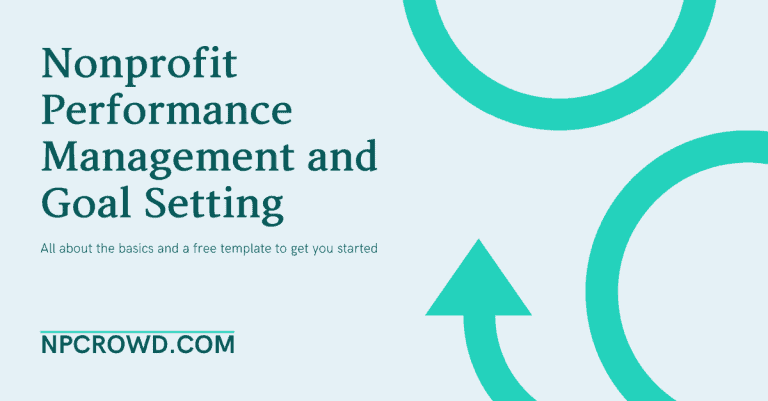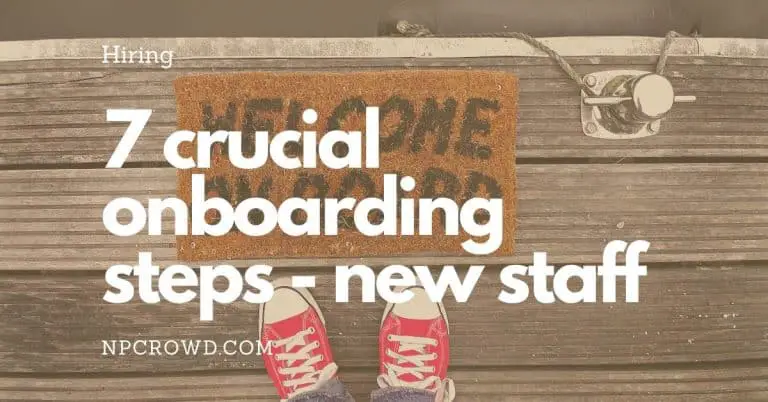PEO for Nonprofits: Simplifying HR and Administrative Processes
Disclaimer: This post may contain affiliate links. These links, if used and purchases made, we may earn a small commission. These affiliate programs do not impact the recommendations we make or the resources we refer you to. Our focus is on providing you the best resources for your nonprofit journey.
Nonprofits can greatly benefit from partnering with a Professional Employer Organization (PEO) to simplify their HR and administrative processes. By outsourcing certain tasks to a PEO, nonprofits can free up valuable time and resources that can be redirected towards their mission and programs. This article explores the advantages of using a PEO for nonprofits, including streamlining HR processes, reducing administrative burden, and choosing the right PEO for your organization.Key Takeaways
- Partnering with a PEO can free up time and resources for nonprofits to focus on their mission and programs.
- PEOs can handle administrative tasks such as payroll processing, benefits administration, and compliance with employment laws.
- Using a PEO can streamline HR processes and improve efficiency and productivity for nonprofits.
- PEOs offer cost savings, access to comprehensive HR services, and peace of mind for nonprofit organizations.
- Nonprofits should consider their specific needs, evaluate PEO service offerings, and consider cost and contract terms when choosing a PEO.
What is a PEO and How Can it Benefit Nonprofits?

Understanding the Role of a PEO
A PEO, or Professional Employer Organization, is a company that provides comprehensive HR services, including benefits, payroll, and HR administration, to other businesses. When a business partners with a PEO, the PEO becomes the employer of record for the business’s employees. This means that the PEO takes care of payroll, benefits administration, and ensures compliance with employment laws. By partnering with a PEO, nonprofits can offload the burden of HR and administrative tasks, allowing them to focus on their core mission and goals. It’s like having a dedicated HR department without the need to hire and manage internal HR staff.
Advantages of Using a PEO for Nonprofits
One of the key benefits of using a PEO for nonprofits is the potential for cost savings. As a small nonprofit, you may not have the same buying power as larger corporations when it comes to negotiating rates with insurance providers. However, by partnering with a PEO, you can take advantage of economies of scale that can lead to better benefits plans at lower costs.
Using a PEO can also save your nonprofit time and resources. PEOs handle administrative tasks such as payroll functions and compliance issues, allowing your team to refocus their energy and time on business growth and development.
In addition to reducing administrative burden, PEOs also offer other benefits for nonprofits. These include:
- Time savings: By having the PEO handle most of the general HR tasks, nonprofits can focus on other core business operations.
- Cost savings: PEOs have greater buying power, which allows them to offer more affordable workers’ compensation and health insurance options compared to what is available to small businesses.
- Peace of mind: Nonprofit owners can feel at ease knowing they have support throughout the employment life cycle.
- Better benefit offerings: Nonprofits can access Fortune 500-level benefits and professional administrative services.
Partnering with a PEO not only reduces administrative burden but also provides nonprofits with the necessary support and resources to thrive in their mission.
Streamlining HR Processes with a PEO

Outsourcing Payroll and Benefits Administration
Outsourcing payroll and benefits administration can be a game-changer for nonprofits. By entrusting these tasks to a reliable PEO, organizations can save time, money, and resources. Payroll is one of the most commonly outsourced HR functions, allowing nonprofits to streamline their payroll processes and ensure accurate and timely payments to employees. Additionally, outsourcing benefits administration can help nonprofits navigate the complexities of employee benefits, such as healthcare and retirement plans.
When considering outsourcing payroll and benefits administration, it’s important to choose a PEO that understands the unique needs of nonprofits. Look for a PEO that has experience working with nonprofit organizations and can provide tailored solutions to meet their specific requirements. By partnering with the right PEO, nonprofits can focus on their mission and leave the administrative burden to the experts.
Managing Employee Onboarding and Offboarding
When it comes to managing employee onboarding and offboarding, a PEO can provide valuable support and streamline the process. With the help of a PEO, organizations can onboard employees across departments with ease, setting up payroll, benefits, devices, and apps quickly and efficiently. Additionally, the PEO system automatically disables departing employees’ devices, ensuring data security.
To further enhance the onboarding experience, PEOs often offer employee training and development courses on various topics, such as communication, leadership, and workplace technology. This access to training materials can help new hires enhance their skills and grow professionally.
Communication is key during the onboarding and offboarding process. It’s important to create a welcoming environment and ensure that new hires feel supported and valued. Digitizing paperwork and using software for payroll setup can save time and reduce errors. Additionally, maintaining open lines of communication with new hires and addressing any concerns or questions they may have is crucial for a successful transition.
Overall, a PEO can simplify the employee onboarding and offboarding process, providing organizations with the tools and support they need to effectively manage these important stages of the employee lifecycle.
Ensuring Compliance with Employment Laws
Compliance with employment laws is crucial for nonprofits to protect their employees and maintain legal integrity. With the constantly evolving landscape of employment laws, it can be challenging for organizations to stay up to date and ensure compliance on their own. This is where a PEO can be a valuable partner.
A PEO like Engage PEO offers comprehensive compliance services to help nonprofits navigate the complexities of employment laws. They provide assistance with EEO, ADA, and FMLA compliance, as well as state and US Department of Labor and Hour compliance. They can also handle administration of unemployment claims and provide hiring and recruitment assistance, including background checks and drug screenings.
In addition, a PEO can offer employment practices liability insurance to protect nonprofits from potential legal risks. They can also provide employee training and help develop employee policies and handbooks to ensure compliance with all applicable laws and regulations.
By partnering with a PEO, nonprofits can have peace of mind knowing that their HR processes are in compliance with employment laws, allowing them to focus on their mission and make a positive impact in their communities.
Reducing Administrative Burden for Nonprofits

Centralizing HR and Administrative Tasks
Centralizing HR and administrative tasks is a key advantage of using a PEO for nonprofits. By consolidating all HR functions into one platform, nonprofits can streamline their processes and improve efficiency. With a centralized system, organizations can easily track and manage employee data, including payroll, benefits, and time off. This eliminates the need for multiple systems and reduces the risk of errors or data discrepancies. Additionally, a centralized system allows HR managers to generate reports and gain insights into HR practices, helping them make informed decisions and identify areas for improvement.
Improving Efficiency and Productivity
One of the key benefits of using a PEO for nonprofits is the ability to improve efficiency and productivity. By outsourcing HR and administrative tasks to a PEO, nonprofits can free up valuable time and resources to focus on their core mission. With a PEO handling tasks such as payroll processing, benefits administration, and employee onboarding, nonprofits can streamline their operations and reduce the burden of administrative work.
Additionally, a PEO can provide access to technology tools and resources that can further enhance efficiency and productivity. For example, employees can search for courses, take notes, and provide feedback through a learning management system. This allows for more effective training and development, leading to increased motivation and skills among workers.
Furthermore, a PEO can centralize HR tasks and data within a unified platform, eliminating the need to log in to multiple systems. This not only saves time but also allows HR managers to generate reports and gain a high-level overview of HR practices. By streamlining data entry and automating processes, nonprofits can reduce manual errors and ensure accuracy in their HR operations.
In summary, partnering with a PEO can significantly improve efficiency and productivity for nonprofits by outsourcing administrative tasks, providing access to technology tools, and centralizing HR processes.
Minimizing HR-related Risks
Minimizing HR-related risks is crucial for nonprofits to ensure smooth operations and protect their employees. Nonprofits may face additional HR-related challenges, such as higher turnover rates than for-profit organizations. According to Inside Charity, as of 2022, nonprofits have an average turnover rate of 19%, compared to 12% for for-profit organizations. This highlights the importance of implementing effective HR strategies to retain talented staff.
One way to minimize HR-related risks is by partnering with a professional employer organization (PEO). A PEO can provide expertise in HR compliance, ensuring that nonprofits adhere to federal and state employment laws. They can also assist with proper document storage retention and creating sound business policies, which can be especially challenging for small nonprofits with employees scattered across various locations.
By leveraging the services of a PEO, nonprofits can mitigate HR risks and focus on their core mission.
Choosing the Right PEO for Your Nonprofit

Identifying Your Organization’s Needs
To make the best choice when selecting a PEO for your nonprofit, it’s important to start by identifying your organization’s needs. Ask yourself questions like:
- Are there specific HR tasks we want to outsource?
- Are we interested in improving benefits packages to attract and retain talent?
- Do we need general HR support, or are we seeking more specific expertise in compliance or risk management?
By outlining your needs, you can better match the right PEO to your business. Remember that not all PEO services are the same, so it’s important to find one that offers the services you require. Once you have identified your needs, you can then shop around for PEOs that suit your requirements. Additionally, consider the following questions when evaluating each company:
- Is it a member of NAPEO?
- Is it IRS certified?
- Are its financial benefits plans and administrative support to stay focused on their mission.
Evaluating PEO Service Offerings
When evaluating PEO services and features, it’s important to consider the specific services being offered and whether they align with the needs of your nonprofit. Take the time to assess whether all of the features provided are necessary for your business, as you don’t want to pay for services that you won’t use. Additionally, look for a PEO that offers transparent pricing, so you know exactly what you’re paying for. Third-party reviews can also be helpful in evaluating the quality of a PEO’s services. Check
Considering Cost and Contract Terms
When choosing a PEO for your nonprofit, it’s important to carefully consider the pricing and contract terms. Pricing can vary depending on the services you need and the size of your organization. Some PEOs offer a bundled pricing model, while others offer an a la carte option. It’s important to evaluate your nonprofit’s specific needs and budget to determine which pricing structure is the best fit. Additionally, it’s crucial to review the contract terms thoroughly. Look out for terms related to contract termination, renewal processes, responsibilities and duties of each party, and dispute resolution. If you have any questions or uncertainties, don’t hesitate to ask for clarification.
Frequently Asked Questions
What is a PEO?
A PEO, or Professional Employer Organization, is a company that provides comprehensive HR services to businesses, including nonprofits. They handle tasks such as payroll processing, benefits administration, and compliance with employment laws.
How can a PEO benefit nonprofits?
Partnering with a PEO can benefit nonprofits by reducing administrative burden, improving compliance with employment laws, and providing access to comprehensive HR services.
What are the advantages of using a PEO for nonprofits?
The advantages of using a PEO for nonprofits include time and cost savings, peace of mind knowing there is support throughout the employment life cycle, and better benefit offerings.
What HR processes can a PEO streamline for nonprofits?
A PEO can streamline HR processes for nonprofits by outsourcing payroll and benefits administration, managing employee onboarding and offboarding, and ensuring compliance with employment laws.
How does a PEO reduce administrative burden for nonprofits?
A PEO reduces administrative burden for nonprofits by centralizing HR and administrative tasks, improving efficiency and productivity, and minimizing HR-related risks.
How can nonprofits choose the right PEO?
Nonprofits can choose the right PEO by identifying their organization’s needs, evaluating PEO service offerings, and considering cost and contract terms.







